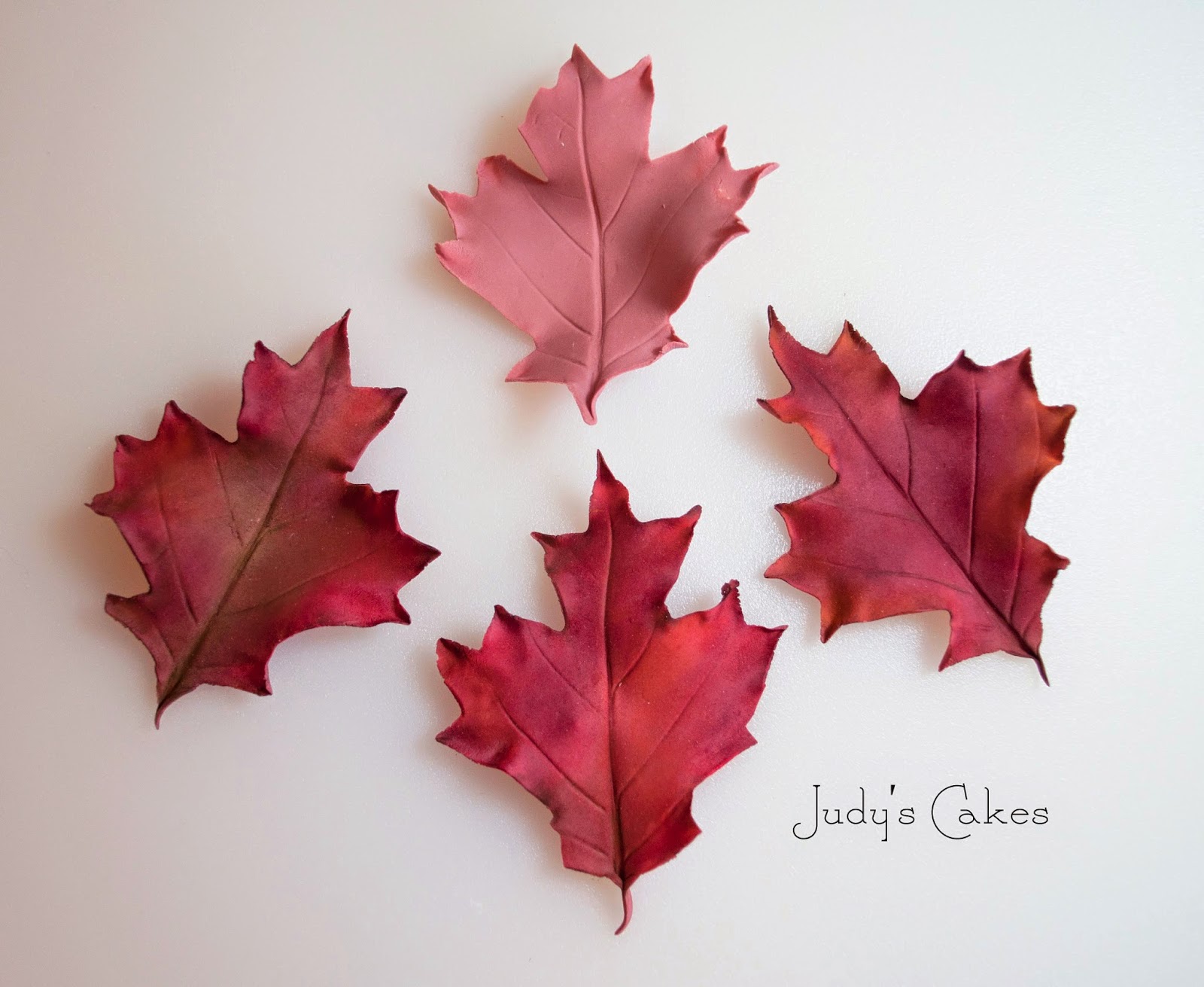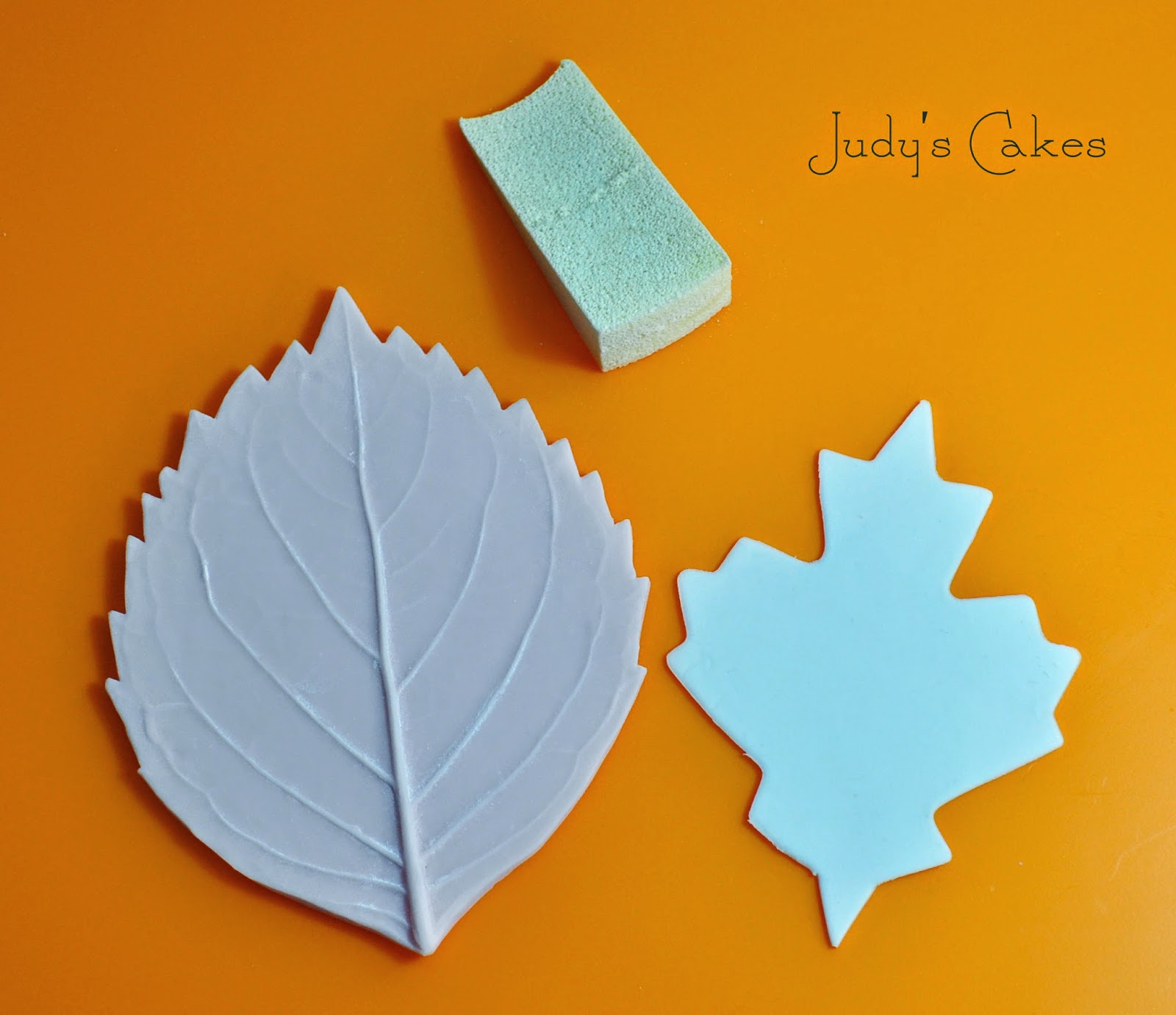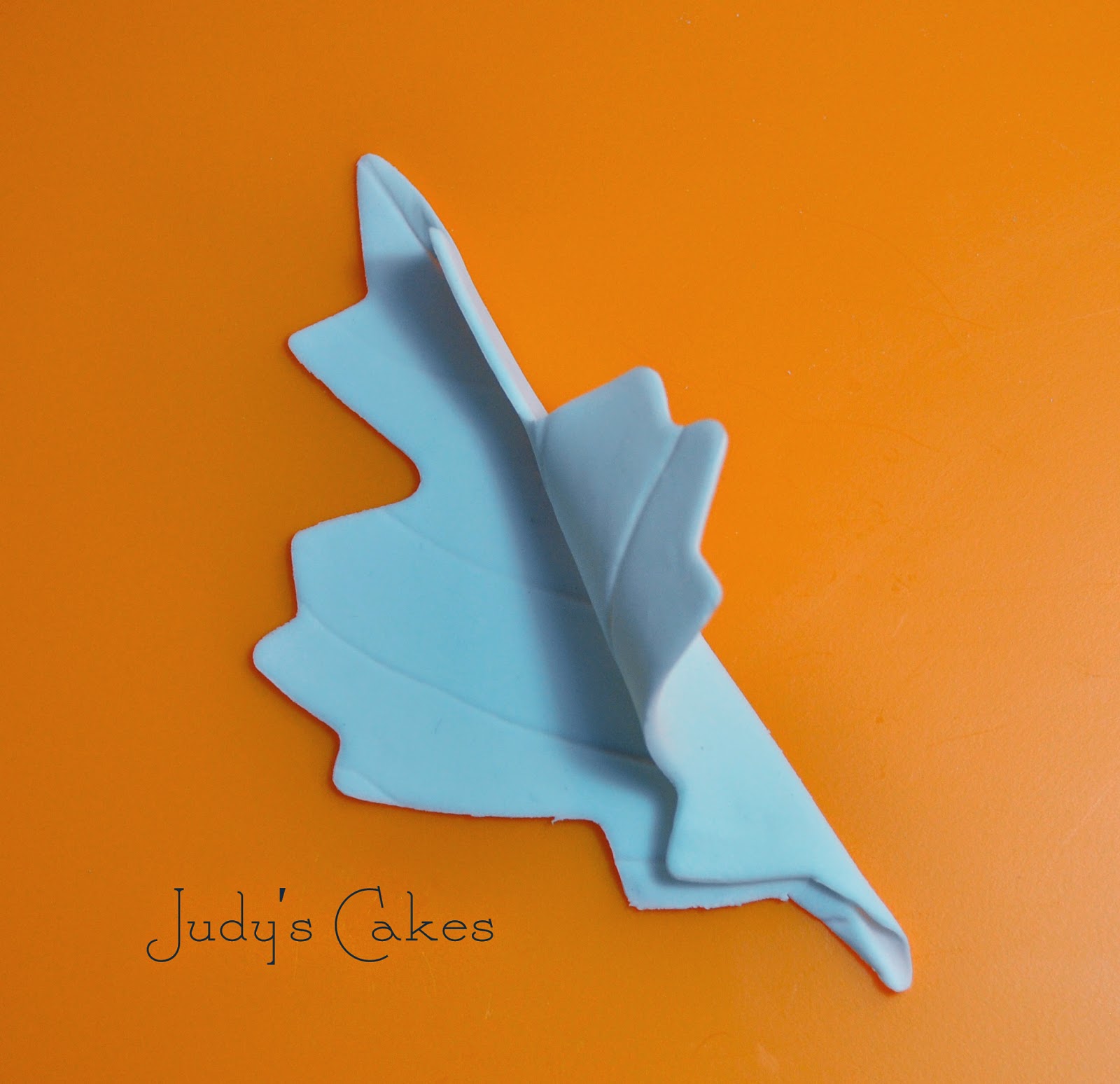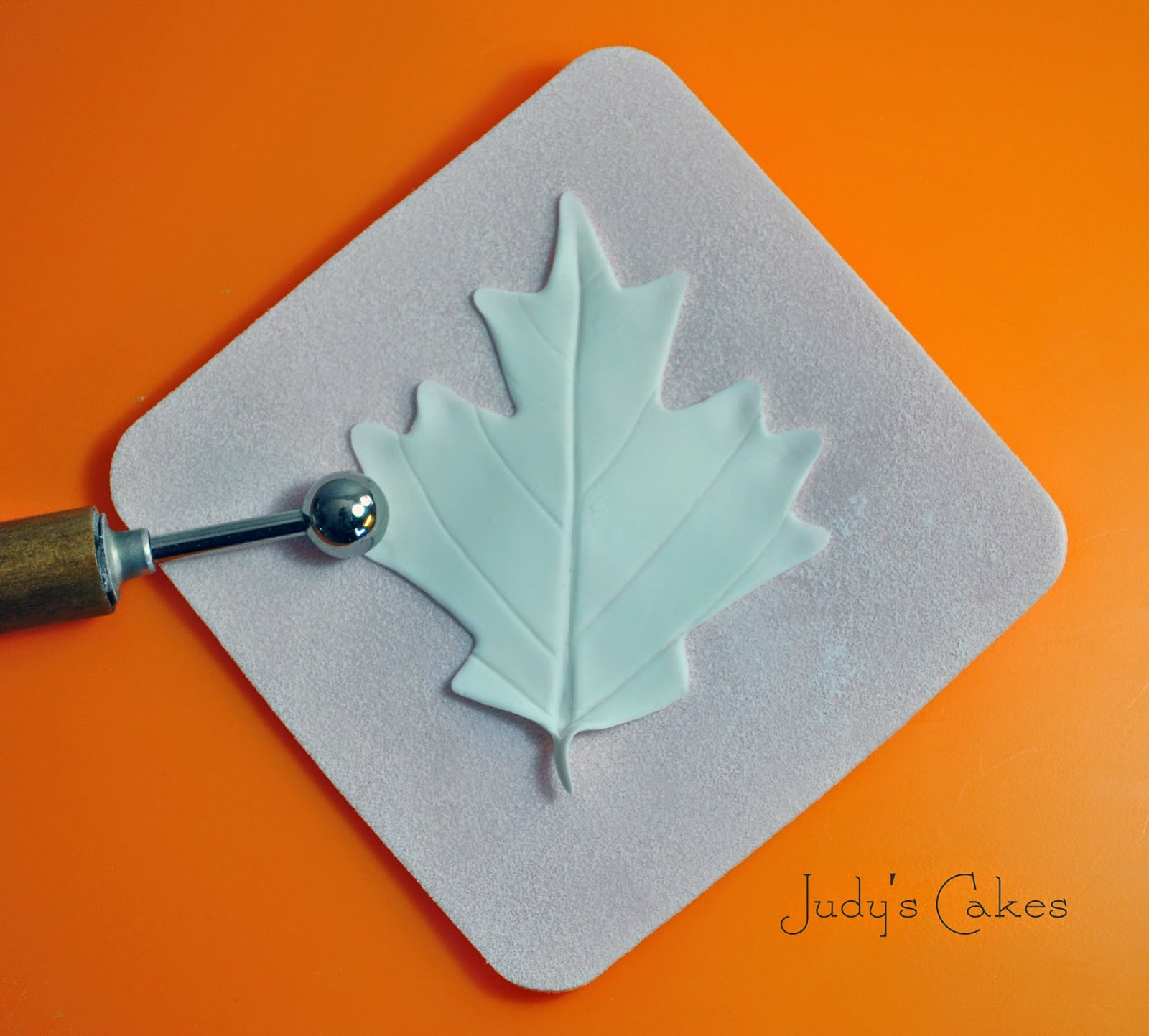This is the second half of a 2 part tutorial on making fall leaves. In the first half I showed you how to cut out a leaf and make it look more realistic. Click here to read Part #1. In Part #2, I'll discuss using different petal dusts on your leaves to achieve bold vibrant colors.
Before we get started, here are a few basic rules to keep in mind:
1- Never start out using dark colors.
You can always make a color darker... but it's almost impossible to lighten it up! This same rule applies to both gum paste and petal dust. By starting out light, it's easier to vary the value and intensity of each color.
2- Less is more.
Begin by adding colors a little at a time. You can always apply more color later... but it's very difficult to remove once it's on.
3- Blend the edges of the colors together.
Doing this will make the colors flow together naturally, so they won't look spotted or splotchy. Be careful, however, not to over blend!
4- Don't worry if the tips or small parts of your leaf break off.
The truth about fall leaves is that they're either drying up or already dead. Take a look at real leaves... you'll notice that they're all shriveled up, crumbly, torn, or even have holes in them. Leaves are not perfect. In fact, they'll look more realistic if they have flaws.
5- Use many different colors of petal dust on each leaf.
Don't be afraid to make extra leaves and experiment with your colors. You won't know how they work unless you try them.
6- Use a lot of different brushes.
I use small paint brushes to apply the petal dust. For this tutorial, I used one brush for the yellows, one for the greens, one for the light reds and oranges, and one for the dark reds and burgundy. Plus I had one very tiny brush for only dark brown.
OK... let's start with the yellow leaf.
Next up... the red leaf.
These fall leaves are a great way to practice your skills. Don't be afraid to play around and use a variety of color combinations. You can even try adding blue or purple to your color scheme! If a leaf breaks... don't worry, it doesn't matter. You can still use it! The whole idea is to discover new ways to use color and to have fun. You might even be surprised at how artistic you can be!!!

 |
| Here's a similar example to the one above. Except I used pink gum paste instead of yellow to make the basic leaf. |
Before we get started, here are a few basic rules to keep in mind:
1- Never start out using dark colors.
You can always make a color darker... but it's almost impossible to lighten it up! This same rule applies to both gum paste and petal dust. By starting out light, it's easier to vary the value and intensity of each color.
2- Less is more.
Begin by adding colors a little at a time. You can always apply more color later... but it's very difficult to remove once it's on.
3- Blend the edges of the colors together.
Doing this will make the colors flow together naturally, so they won't look spotted or splotchy. Be careful, however, not to over blend!
The truth about fall leaves is that they're either drying up or already dead. Take a look at real leaves... you'll notice that they're all shriveled up, crumbly, torn, or even have holes in them. Leaves are not perfect. In fact, they'll look more realistic if they have flaws.
5- Use many different colors of petal dust on each leaf.
Don't be afraid to make extra leaves and experiment with your colors. You won't know how they work unless you try them.
6- Use a lot of different brushes.
I use small paint brushes to apply the petal dust. For this tutorial, I used one brush for the yellows, one for the greens, one for the light reds and oranges, and one for the dark reds and burgundy. Plus I had one very tiny brush for only dark brown.
OK... let's start with the yellow leaf.
 |
| I began by dusting a mid-tone yellow here and there, concentrating on the center of the leaf. |
 | ||||||||
| Then I randomly add light orange to a few other places on the leaf. |
 | |
| Next, I deepen the color by adding a mid-tone orange to the outside edges of the light orange spots. |
 |
| There's a huge variety of colors you can make with a basic yellow leaf. Play around a little, and see what kind of colors you can come up with. |
Next up... the red leaf.
 |
| I start by adding a reddish orange color to different parts of the leaf. |
 |
| Next I brush on a mid-tone red to the remaining areas. |
 |
| I deepen a few of the reds by adding an even darker red color. |
 | ||
| Here's an example of a variety of colors you can achieve by starting out with the same basic pink leaf. Try using different shades of orange, pink, red, burgundy, and even a little dark green. |
These fall leaves are a great way to practice your skills. Don't be afraid to play around and use a variety of color combinations. You can even try adding blue or purple to your color scheme! If a leaf breaks... don't worry, it doesn't matter. You can still use it! The whole idea is to discover new ways to use color and to have fun. You might even be surprised at how artistic you can be!!!























